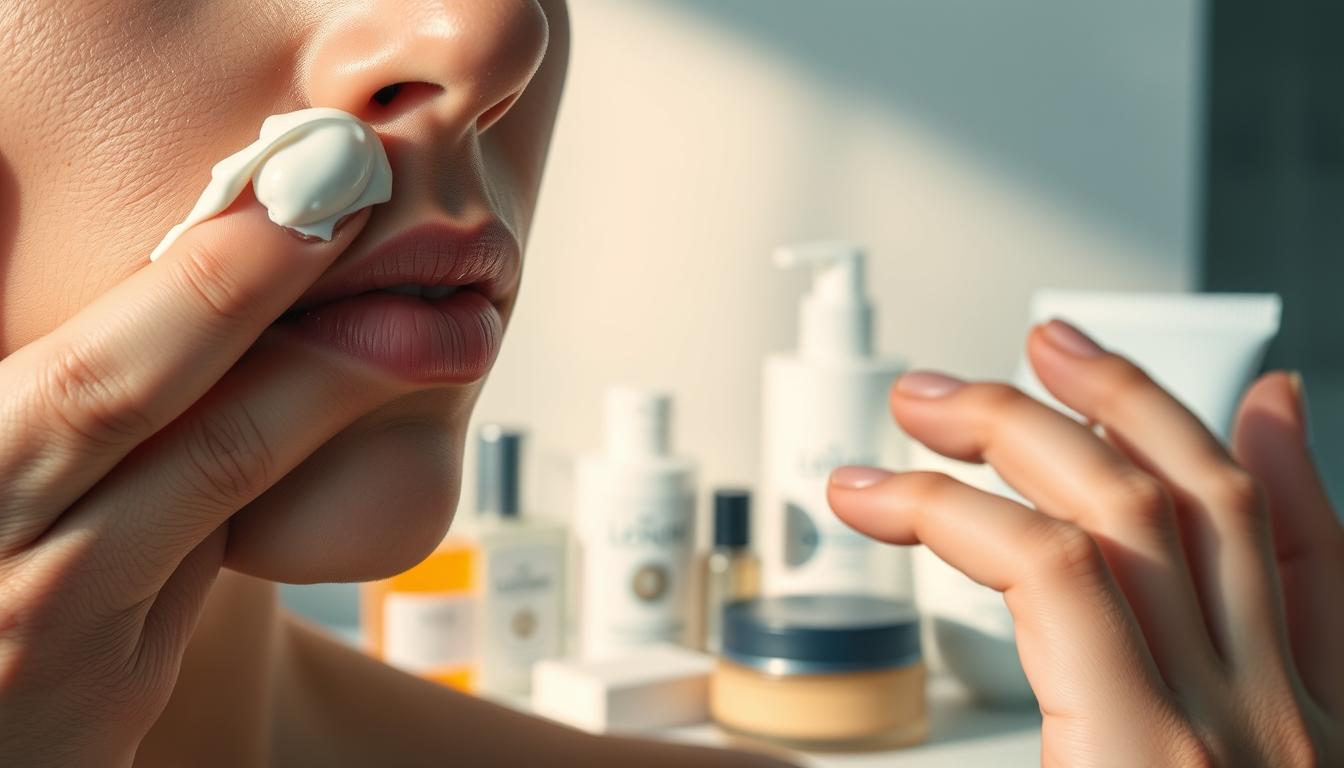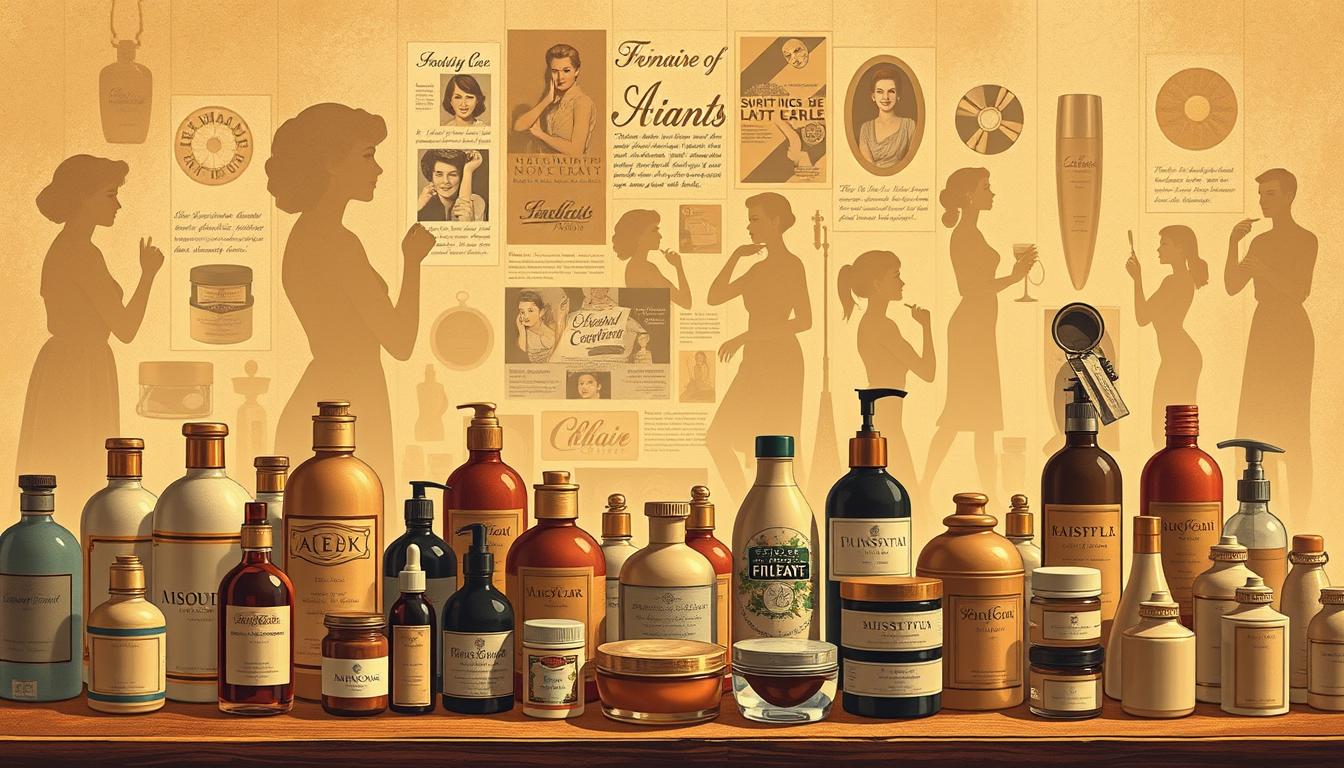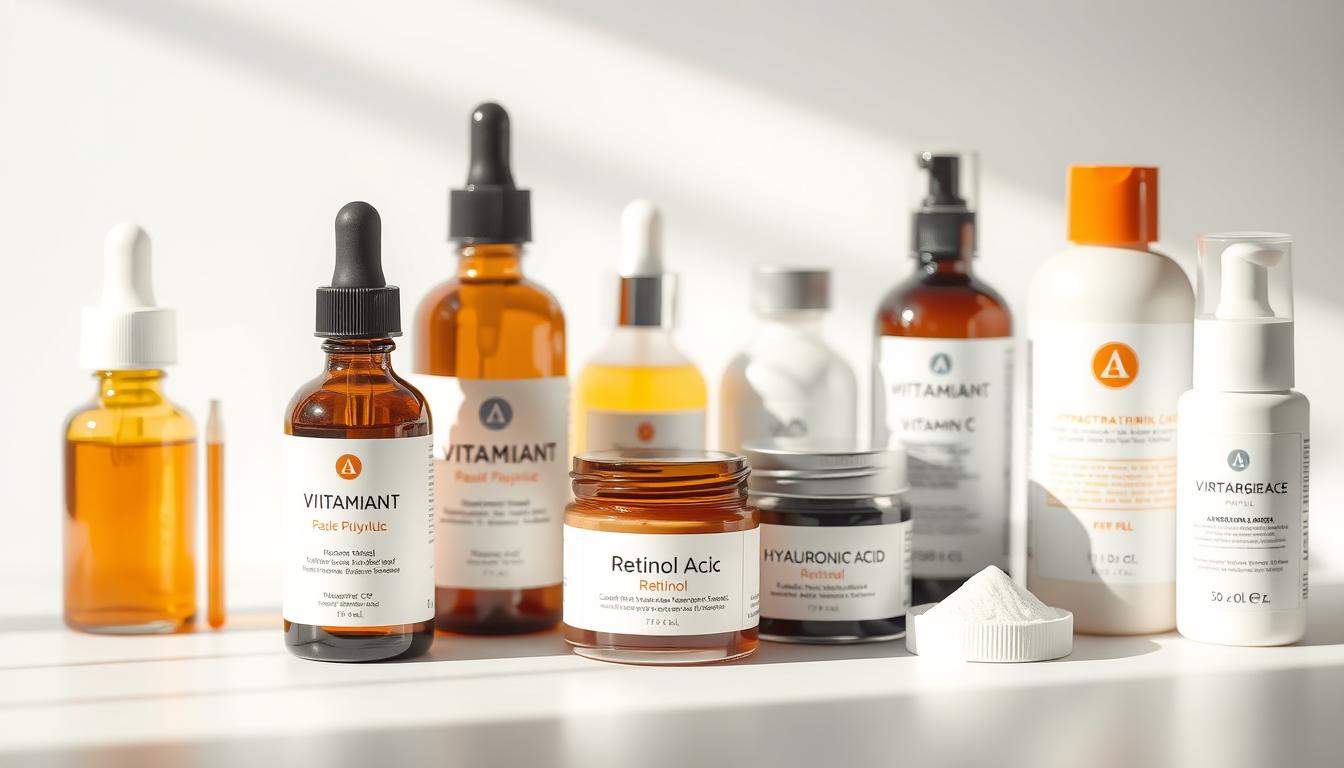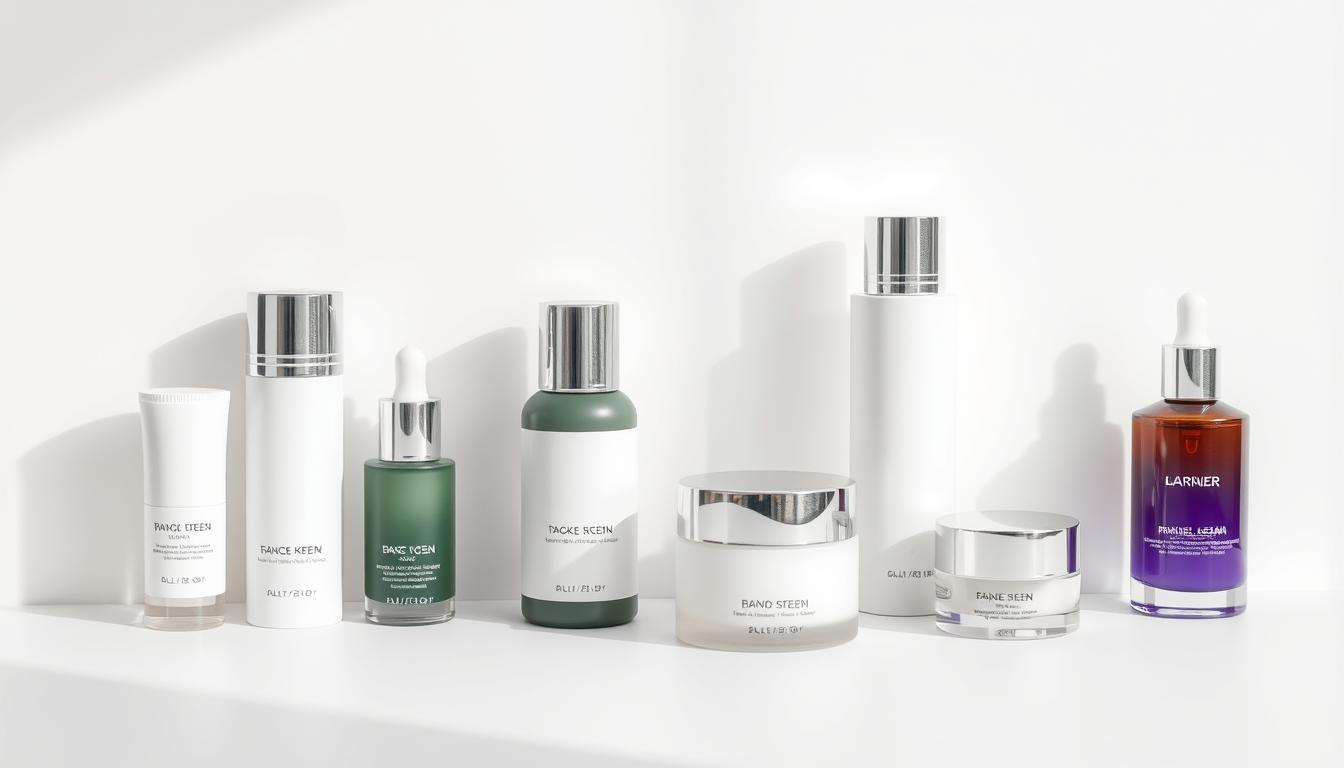The Truth About Men's & Women's Skincare: Are There Real Differences?
When it comes to facial care, a common debate revolves around the differences in skincare for men and women. Many assume that the biological differences between the sexes necessitate distinct skincare approaches. However, the reality is more nuanced, and skin biology plays a crucial role in determining the most effective skincare strategies.

As we explore the intricacies of dermatology, it becomes clear that understanding the fundamental principles of skincare is essential, regardless of gender. Our goal is to dissect the myths surrounding men's and women's skincare, providing clarity on what truly matters in a skincare routine.
Key Takeaways
- Understanding skin biology is crucial for effective skincare.
- Dermatological principles apply universally, regardless of gender.
- Skincare needs are more individual than gender-based. -Effective facial care involves more than just product selection.
- A well-informed skincare routine can significantly impact skin health.
The Science of Skin Across Genders
Delving into the science of skin reveals both similarities and differences in skincare requirements across genders. Understanding the underlying biology of skin is essential for developing effective skincare routines.
Basic Skin Structure and Function
The skin is the largest organ in the human body, serving as a protective barrier against external factors. It is composed of several layers, with the epidermis being the outermost layer, followed by the dermis, and then the hypodermis. The basic structure and function of skin are similar across genders, with the epidermis providing a barrier against water loss and external pathogens, and the dermis containing blood vessels, nerve endings, and hair follicles.
Skin's primary functions include:
- Regulation of body temperature
- Protection against external damage
- Sensation through nerve endings
Common Skin Concerns for All Genders
Despite gender differences, many skin concerns are common across genders. These include acne, dryness, sensitivity, and signs of aging such as wrinkles and fine lines. Understanding these common concerns can help in developing skincare routines that are effective for everyone.

- Acne and breakouts
- Dryness and dehydration
- Sensitivity and irritation
- Signs of aging like wrinkles and fine lines
Biological Differences in Male and Female Skin
Biological variations in skin structure and function between genders can significantly impact skincare effectiveness. While the basic structure of skin is similar across genders, there are distinct differences that influence how skin responds to various products and treatments.
Hormonal Influences on Skin Health
Hormones play a crucial role in skin health, affecting everything from oil production to skin elasticity. Understanding these hormonal influences is key to addressing specific skin concerns.
Testosterone and Skin Oil Production
Testosterone is known to stimulate sebum production, which can lead to oilier skin in individuals with higher levels of this hormone. This is one reason why men generally have larger sebaceous glands and produce more sebum than women.
Estrogen and Skin Elasticity
Estrogen, on the other hand, has a positive effect on skin elasticity. It helps maintain the skin's firmness and hydration, contributing to a more youthful appearance. Declines in estrogen levels, such as during menopause, can lead to decreased skin elasticity and increased dryness.
Thickness, Texture, and Collagen Variations
There are also notable differences in skin thickness, texture, and collagen density between men and women. Men's skin tends to be thicker and have a higher collagen density, which can contribute to a more robust skin texture.
pH Levels and Natural Moisture Barriers
The skin's natural pH and moisture barrier also vary between genders. While the skin's pH is slightly acidic, ranging from about 4.5 to 5.5, differences in moisture retention and barrier function can affect how skin responds to products.

The Truth About Men's & Women's Skincare: Are There Real Differences?
As we explore the world of skincare, a critical question arises: are the differences between men's and women's products based on real skin variations or marketing strategies? The skincare industry is replete with products tailored to specific genders, but the scientific basis for these distinctions is often unclear.
Scientific Evidence of Gender-Specific Skin Needs
Research into the differences between male and female skin has yielded some insights, but the evidence is not always conclusive. Studies have shown that there are some biological differences between men's and women's skin, such as variations in skin thickness, collagen density, and hormonal influences.
However, the significance of these differences in terms of skincare needs is still a topic of debate among dermatologists. Some argue that these variations necessitate different product formulations, while others contend that individual skin types and concerns are more important than gender.
Marketing Tactics vs. Dermatological Reality
The skincare industry employs various marketing tactics to promote gender-specific products, often emphasizing the supposed unique benefits for men and women. However, many of these claims are not supported by robust scientific evidence. For instance, some products are marketed as being specifically formulated for men's skin, with ingredients like fragrances and dyes that may not be necessary or could even be irritating.

Ultimately, the decision to use gender-specific skincare products should be based on individual skin types and concerns rather than gender alone. By understanding the scientific evidence and being aware of marketing tactics, consumers can make more informed choices about their skincare routines.
The Evolution of Gendered Skincare Products
The history of skincare is complex, with beauty standards playing a crucial role in shaping the products we use today. As we explore the evolution of gendered skincare products, it's essential to understand the historical context that has influenced the industry.
Historical Perspective on Beauty Standards
Beauty standards have varied significantly across cultures and historical periods. In the early 20th century, skincare was primarily associated with women's beauty routines. However, as societal attitudes towards grooming evolved, men's skincare began to gain traction. The 1980s saw a significant surge in men's grooming products, marking a turning point in the industry.

The historical development of beauty standards has been influenced by a range of factors, including cultural norms, media representation, and celebrity culture. As our understanding of skin health has improved, so too has the range of products available to address specific skin concerns.
The Rise of Men's Specific Facial Care Lines
In recent years, men's facial care has become increasingly prominent, with many brands launching dedicated product lines. These products often focus on simplicity and efficacy, reflecting the growing demand for straightforward, effective skincare solutions among men.
The rise of men's specific facial care lines has been driven by a combination of factors, including changing societal attitudes towards men's grooming and the growing awareness of the importance of skincare for overall health. As a result, the modern skincare market offers a diverse range of products tailored to different skin types and concerns, regardless of gender.
Analyzing Common Ingredients in Gendered Products
Upon closer inspection, the ingredients in men's and women's skincare products reveal some interesting similarities and differences. As we explore the formulations of these products, it becomes clear that certain ingredients are more prevalent in products marketed towards one gender over the other.
Ingredients Typically Found in Men's Products
Men's skincare products often focus on simplicity and functionality, with ingredients that address specific concerns such as oil control and post-shave irritation.
Astringents and Oil Control Formulations
Astringents like salicylic acid and witch hazel are commonly found in men's skincare products, helping to control oil production and reduce the appearance of pores.
Post-Shave Soothing Compounds
Ingredients such as aloe vera and chamomile are used in post-shave products to soothe and calm the skin, reducing irritation and discomfort.
Ingredients Typically Found in Women's Products
Women's skincare products, on the other hand, often incorporate a wider range of ingredients aimed at addressing various skin concerns, including aging and hydration.
Anti-Aging and Brightening Agents
Anti-aging ingredients like retinol and vitamin C are popular in women's skincare products, helping to reduce fine lines, improve skin texture, and brighten the complexion.
Hydrating and Plumping Ingredients
Hydrating ingredients such as hyaluronic acid and glycerin are used to plump and moisturize the skin, giving it a more youthful appearance.

The following table summarizes some common ingredients found in men's and women's skincare products:
While there are differences in the ingredients used in men's and women's skincare products, there is also a significant overlap in the types of formulations used to address common skin concerns.
Packaging and Fragrance: Marketing Tactics or Necessity?
The impact of packaging and fragrance on skincare products is multifaceted, influencing both user experience and product efficacy. As we explore this topic, we will examine the psychological aspects of product design and branding, as well as the critical considerations for fragrance in sensitive skin types.
The Psychology Behind Product Design and Branding
Product packaging is not just about containing the product; it's a crucial marketing tool that communicates brand identity and values. The design, color scheme, and overall aesthetic of packaging can significantly influence consumer perception and purchasing decisions. For instance, eco-friendly packaging can appeal to environmentally conscious consumers, while sleek, modern designs might attract those looking for a luxury experience.
We often associate certain packaging attributes with product quality. For example, a sturdy, well-designed bottle may convey a sense of premium quality, whereas flimsy packaging might suggest a cheaper, less effective product. Moreover, branding elements such as logos, typography, and imagery play a vital role in creating an emotional connection with the consumer.

Fragrance Considerations for Sensitive Skin Types
Fragrance is another critical aspect of skincare products that can significantly impact user experience. While a pleasant scent can enhance the user experience, fragrance is also a common irritant for sensitive skin. Individuals with sensitive skin must be cautious when selecting products, as fragrances can cause allergic reactions, irritation, or contact dermatitis.
For those with sensitive skin, fragrance-free or hypoallergenic products are often recommended. Manufacturers are now developing products with carefully selected fragrances that are less likely to cause irritation. It's essential for consumers to read labels carefully and perform patch tests before using a new product, especially if they have a history of skin sensitivity.
We must also consider that fragrance can affect the stability and efficacy of skincare products. Certain fragrance ingredients can interact with other components, potentially reducing the product's effectiveness or even causing it to degrade over time.
Debunking Common Skincare Myths by Gender
Many skincare myths are tied to gender, but what does the science actually say? The skincare industry is replete with products and advice tailored to specific genders, often perpetuating myths that can confuse consumers. Let's dive into some of these myths and uncover the truth behind them.
Men Don't Need Moisturizer and Other Fallacies
One common myth is that men don't need moisturizer because they have oilier skin. However, this is a misconception. All skin types, regardless of gender, need moisturizing to maintain the skin's barrier function. Moisturizers help prevent dryness, irritation, and even signs of aging. Men's skin can be just as prone to dryness and irritation, especially after shaving.
- Moisturizers are essential for maintaining skin hydration.
- They help in reducing irritation and inflammation.
- Using a moisturizer can improve skin texture and appearance.

Women Need More Complex Routines: Fact or Fiction?
Another myth is that women require more complex skincare routines than men. While it's true that some women may need more tailored approaches due to various skin concerns, this isn't universally true. The key to an effective skincare routine is not its complexity, but rather its suitability to an individual's skin type and concerns. Both men and women can benefit from simple, well-designed routines that address their specific skin needs.
- Identify your skin type and concerns.
- Choose products that are formulated for your skin type.
- Stick to a consistent routine for best results.
By debunking these myths, we can move towards a more inclusive understanding of skincare that focuses on individual skin needs rather than gender.
Best Skincare Routines for Couples: Sharing Products Effectively
When it comes to skincare, couples often wonder if they can share products and simplify their routines. The answer lies in understanding the core products that can be shared and when separate products might be necessary.
Core Products That Work for Everyone
Certain skincare products are universally beneficial and can be shared among couples. These include products that address fundamental skin needs without being gender-specific.
Universal Cleansers and Sunscreens
Cleansers and sunscreens are essential components of any skincare routine. A gentle, non-comedogenic cleanser can effectively clean the skin without causing irritation, making it suitable for both partners. Similarly, a broad-spectrum sunscreen with a high SPF can protect both skin types from UV damage.
Shared Treatment Products
Products containing active ingredients like retinol or hyaluronic acid can be beneficial for a wide range of skin types. These ingredients help with skin renewal, hydration, and anti-aging, making them versatile options for couples to share.
When Separate Products Might Be Necessary
While many products can be shared, there are instances where separate products might be more beneficial. For example, if one partner has sensitive skin and the other does not, they may require different formulations to address their specific skin concerns.
Key considerations for separate products include:
- Skin type: Different skin types (dry, oily, combination) may require tailored products.
- Specific skin concerns: Issues like acne, hyperpigmentation, or fine lines may necessitate different active ingredients.
- Fragrance preferences: Sensitivity or preferences regarding fragrances can dictate the need for separate products.
By understanding these factors, couples can make informed decisions about which products to share and which to keep separate, optimizing their skincare routines.
Conclusion
As we reflect on the differences between men's and women's skincare, it becomes clear that the distinction is not as straightforward as often perceived. Our summary of the key points highlights that while biological differences exist, they do not necessarily dictate entirely different skincare needs.
The evolution of skincare has shown a shift towards more inclusive and personalized products, moving beyond traditional gender boundaries. Brands are now focusing on skin types and concerns rather than gender, a trend that is expected to continue.
In conclusion, effective skincare is not about adhering to gender-specific products but understanding individual skin needs. By adopting a more nuanced approach, we can work towards healthier, more resilient skin, regardless of gender.
FAQ
Are men's and women's skincare products formulated differently due to biological differences?
While there are some biological differences between male and female skin, such as hormonal influences and skin thickness, the fundamental needs of the skin remain the same across genders. Skincare products can be formulated to address specific skin concerns, regardless of gender.
Do men need to use different skincare products than women?
Not necessarily. We believe that the key to effective skincare is understanding individual skin types and concerns, rather than relying on gender-specific products. Men and women can use similar products if they have similar skin types and concerns.
Are unisex skincare products effective for both men and women?
Yes, unisex skincare products can be effective for both men and women, as they are often formulated to address common skin concerns such as acne, dryness, and sensitivity. We recommend choosing products based on individual skin types and needs rather than gender.
How do hormonal influences affect skin health, and can skincare products help?
Hormonal fluctuations can impact skin health, leading to issues like acne, oiliness, or dryness. While skincare products can't completely counteract hormonal effects, they can help manage symptoms. For example, products containing salicylic acid or benzoyl peroxide can help control acne.
Can men and women share the same skincare routine?
Yes, men and women can share a skincare routine if they have similar skin types and concerns. We recommend identifying core products that work for everyone, such as universal cleansers and sunscreens, and adjusting the routine as needed based on individual skin needs.
Are there any skincare myths specific to men or women that need to be debunked?
Yes, there are several skincare myths associated with gender. For example, the idea that men don't need moisturizer is a common fallacy, as men can also benefit from moisturizing products. Similarly, the notion that women need more complex routines is not necessarily true, as individual skin needs should dictate the complexity of a skincare routine.
What are the benefits of using gender-neutral skincare products?
Gender-neutral skincare products can be beneficial for several reasons. They promote inclusivity, simplify product choices, and often focus on addressing specific skin concerns rather than catering to gender-specific marketing. We believe that this approach can lead to more effective and personalized skincare.
How can couples simplify their skincare routines and share products effectively?
Couples can simplify their skincare routines by identifying core products that work for both partners, such as universal cleansers and sunscreens. They can also consider sharing treatment products that address common skin concerns. By doing so, they can streamline their routines and reduce product clutter.